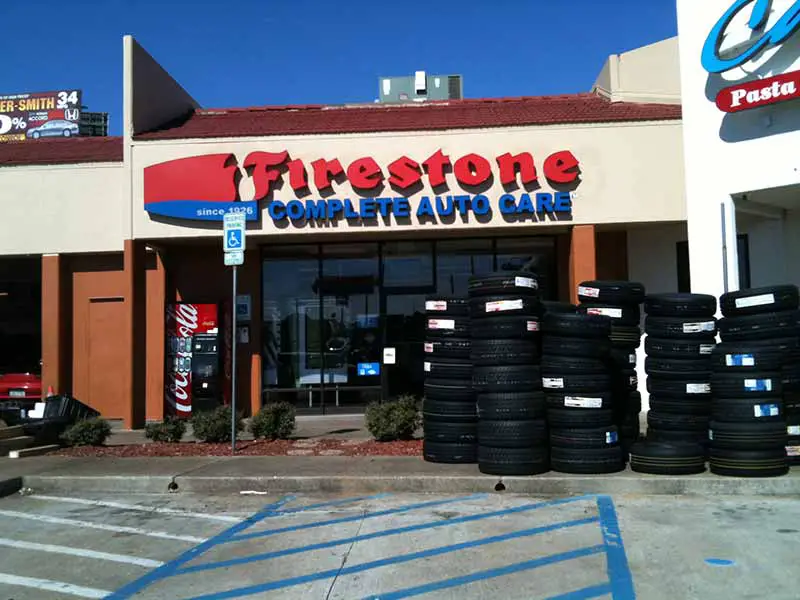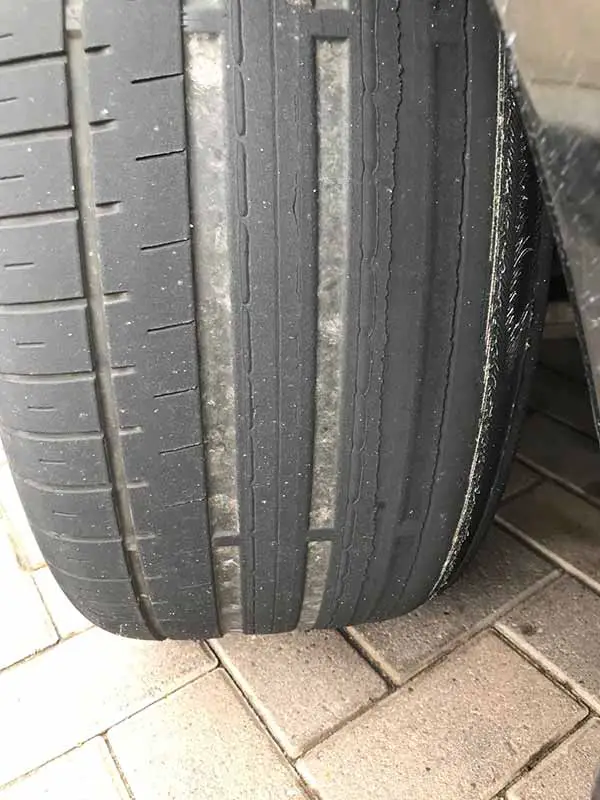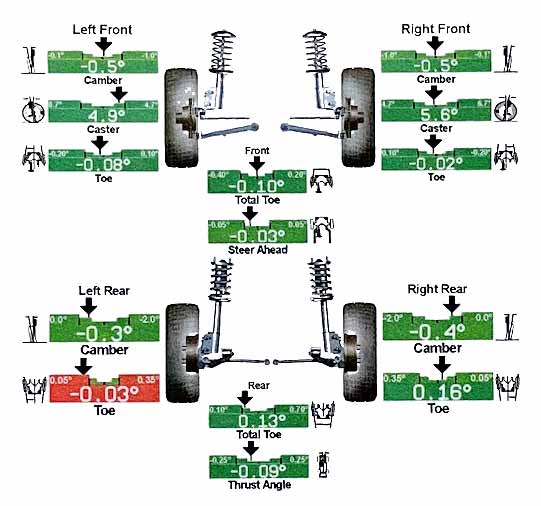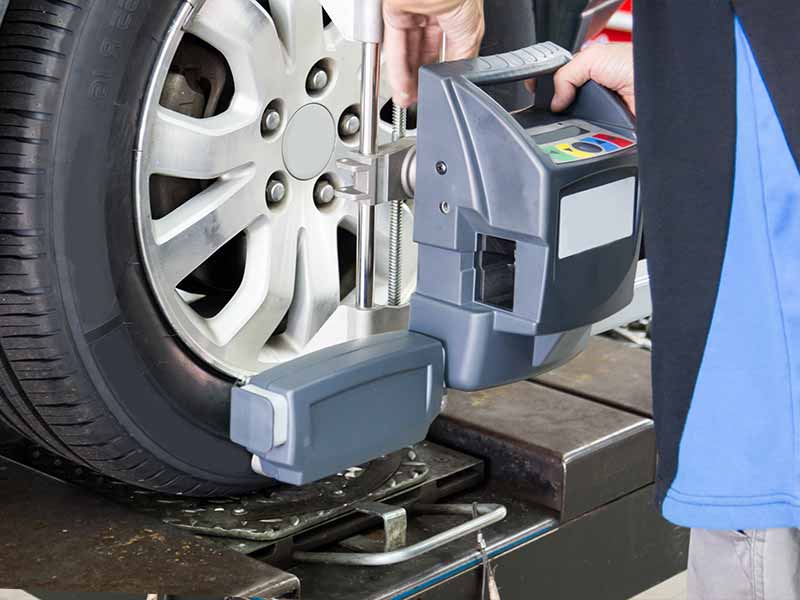Is your car pulling to one side or are your tires wearing out faster than they should? These could be signs that your vehicle needs a wheel alignment. But with so many options out there, you might be wondering if Firestone’s lifetime alignment service is worth the investment. You’re not alone, and we’ve got the answers you’re looking for.
Firestone Lifetime Alignment
Firestone’s lifetime alignment service includes checks every 6 months or 6,000 miles, added tire and suspension inspections, and a cost similar to two standard alignments. It’s a smart long-term investment that can offer long-term cost savings, convenience, and peace of mind.
In this article, we’ll delve into the intricacies of wheel alignment, explore what Firestone’s lifetime alignment service entails, and help you decide whether it’s the right choice for you. We’ll cover everything from the frequency of alignments to the signs of bad alignment, and even discuss the terms and conditions of Firestone’s lifetime alignment service.
Let’s take a closer look.

What Does Firestone Lifetime Alignment Mean?
When you opt for a “lifetime alignment” service from Firestone Complete Auto Care, you’re signing up for a long-term commitment to your vehicle’s wheel alignment. Unlike a standard one-time alignment, this service allows you to receive alignments for the life of your vehicle after paying a one-time fee.
Specifics of the Service
Firestone’s lifetime alignment service is comprehensive and includes several key features:
- Frequency Limitations: You can get your vehicle aligned as often as needed, but there are restrictions. Specifically, you can return for an alignment every 6 months or every 6,000 miles, whichever comes first.
- Tire Pressure: The service includes ensuring that your tires are inflated to the correct pressures, which is crucial for proper alignment and optimal vehicle performance.
- Suspension and Steering Inspection: Technicians will inspect your vehicle’s suspension and steering components for wear and tear that could affect alignment.
- Alignment to Manufacturer’s Specifications: Using advanced computerized alignment equipment, the wheels and tires are aligned to your vehicle manufacturer’s specifications.
Terms and Conditions: The Fine Print
Before you decide to go for this offer, it’s crucial to understand the terms and conditions:
- Non-Transferable: The lifetime alignment service is generally tied to the specific vehicle for which it was purchased and is not transferable to a new vehicle or a different owner.
- Additional Costs: While the alignment itself is covered, any extra parts or labor required for wear and tear or other issues are not included in the lifetime alignment fee.
The Benefits of Lifetime Alignment
Choosing Firestone’s lifetime alignment service offers several advantages:
- Cost-Effectiveness: The one-time fee can save you money in the long run, especially if you plan to keep your vehicle for several years.
- Convenience: The service takes the hassle out of worrying about alignment, allowing you to get it checked and adjusted as needed within the frequency limitations.
- Peace of Mind: Knowing that professionals will inspect not just your alignment but also related components offers an added layer of reassurance.
Firestone Lifetime Alignment Price
The cost of an alignment can vary depending on your vehicle’s make and model. To give you an idea of what to expect, at the time of writing, the cost of a standard alignment is currently a little over $100 on average for most cars and trucks.
Firestone Complete Auto Care offers a lifetime alignment service that, at the time of writing, is typically priced around the amount of two standard alignments. Since you’re likely purchasing the service at the time you’re having the first alignment performed, this means it will only take one more alignment service (approximately) to recoup the upfront cost.
What’s Included in the Price
The lifetime alignment service from Firestone typically includes:
- Unlimited Alignments: Within the frequency limitations of every 6 months or 6,000 miles.
- Tire Pressure Checks: Ensuring your tires are inflated to the correct pressures.
- Suspension and Steering Inspection: A thorough check of these components for wear and tear that could affect alignment.
- Advanced Computerized Alignment: Precise measurements using state-of-the-art equipment to align your wheels to the manufacturer’s specifications.
Additional Costs to Consider
While the lifetime alignment covers the alignment itself, there are some additional costs you might encounter:
- Parts Replacement: If new parts are needed to achieve proper alignment, those are not included in the lifetime alignment fee.
- Labor for Additional Repairs: Any labor costs for additional repairs or part replacements are separate.
Is It Worth the Investment?
When deciding whether the lifetime alignment service is worth the upfront cost, consider the following:
- Long-Term Savings: If you plan to keep your vehicle for several years, the lifetime alignment could offer significant cost savings in the long run.
- Driving Conditions: If you frequently drive on rough roads or in conditions that can affect your alignment, the lifetime service may offer better value.

Signs of Bad Alignment
Proper wheel alignment is crucial for the safety and performance of your vehicle. Knowing the signs of bad alignment can help you address the issue before it leads to more significant problems like uneven tire wear or compromised handling.
Common Indicators of Misalignment
Here are some signs that your vehicle may need an alignment:
- Uneven Tire Wear: If you notice that your tires are wearing unevenly, it’s a strong indicator that your vehicle is out of alignment.
- Steering Wheel Vibration: A vibrating steering wheel is often a sign of misalignment or imbalance in your vehicle’s wheels.
- Vehicle Drift or Pull: If your vehicle drifts to one side when you’re driving on a straight road, it’s likely that your wheels are misaligned.
- Off-Center Steering Wheel: If your steering wheel is off-center when driving straight, this is another sign of alignment issues.
The Role of Advanced Computerized Equipment
Advanced computerized alignment equipment, like that used by Firestone Complete Auto Care, can detect even minor alignment issues that might not be immediately noticeable. These high-precision tools provide accurate measurements, ensuring that your vehicle’s wheels are aligned to the manufacturer’s specifications.
Immediate Action is Key
If you notice any of these signs, it’s crucial to get an alignment check as soon as possible. Ignoring these indicators can lead to:
- Reduced Fuel Efficiency: Misaligned wheels can cause your vehicle to work harder, reducing fuel efficiency.
- Increased Tire Wear: Bad alignment can lead to faster and uneven tire wear, requiring more frequent replacements.
- Compromised Safety: Poor alignment can affect your vehicle’s handling, making it less stable and increasing the risk of accidents.
Why Would an Alignment Fail?
Wheel alignment might seem straightforward, but it’s a complex process that involves precise adjustments to various components of your vehicle’s suspension system. Despite the use of advanced computerized alignment equipment, there are instances where an alignment might fail to correct issues effectively.
Common Reasons for Alignment Failure
Here are some typical reasons why an alignment might not be successful:
- Worn-Out Parts: If your vehicle has worn-out or damaged suspension components, a simple alignment won’t fix the underlying issue.
- Previous Repairs: Poorly executed past repairs can affect the alignment process, making it difficult to achieve proper wheel alignment.
- Structural Damage: If your vehicle has suffered structural damage, such as a bent frame, achieving proper alignment can be challenging.
Signs of a Failed Alignment
If your alignment has failed, you might notice some of the following symptoms:
- Persistent Issues: Problems like uneven tire wear, steering wheel vibration, or vehicle drift may continue even after an alignment service.
- New Problems: Sometimes, a failed alignment can introduce new issues, such as pulling to one side when braking.
The Role of Advanced Computerized Equipment
Advanced computerized alignment equipment, like that used by Firestone Complete Auto Care, can often identify issues that might lead to a failed alignment. This technology provides a comprehensive analysis, allowing technicians to spot potential problems before they become significant issues.
What to Do If Your Alignment Fails
If you suspect that your alignment has failed, here are some steps to take:
- Consult the Technician: Discuss the issue with the technician who performed the alignment to understand what went wrong.
- Second Opinion: In some cases, getting a second opinion from another service provider can offer additional insights.
- Address Underlying Issues: Before attempting another alignment, it’s crucial to address any underlying issues that could be causing the alignment to fail.

What is Wheel Alignment?
Wheel alignment is a critical maintenance task that ensures the angles of your car’s wheels are set to the manufacturer’s specifications. Proper alignment is essential for the optimal performance of your vehicle, including better fuel efficiency, smoother rides, and longer-lasting tires.
Why Wheel Alignment Matters
- Safety: Misaligned wheels can make your car harder to steer and control.
- Tire Lifespan: Properly aligned wheels help your tires wear evenly, extending their lifespan.
- Fuel Efficiency: A well-aligned car uses fuel more efficiently than one with misaligned wheels.
- Smooth Ride: Alignment issues can cause vibrations or a shaky steering wheel, making your ride less comfortable.
Components Involved in Wheel Alignment
When we talk about wheel alignment, we’re really talking about adjusting three main angles of your wheels, often referred to as toe, camber, and caster.
- Toe: This is the angle at which your tires turn inward or outward when viewed from above. Incorrect toe alignment can cause uneven tire wear.
- Camber: This is the inward or outward tilt of the top of the tire when viewed from the front. Incorrect camber can lead to wear on one edge of the tire.
- Caster: This angle helps balance steering, stability, and cornering. It’s the angle of your steering axis when viewed from the side of your vehicle.
Two-Wheel vs. Four-Wheel Alignment
- Two-Wheel Alignment: Also known as front-end alignment, this process adjusts only the front wheels. It’s generally less expensive but may not solve all alignment issues.
- Four-Wheel Alignment: This involves adjusting all four wheels, and it’s usually recommended for all-wheel-drive vehicles or those with independent rear suspension.
Standard vs. Lifetime Alignment
- Standard Alignment: This is a one-time service where your wheels are aligned. You’ll need to pay again the next time you need an alignment.
- Lifetime Alignment: This is a service where you pay a higher upfront cost, but you can come back for free alignments for the life of the car. This can be a cost-effective option if you plan to keep your car for several years.
Resources
Below are some links you may find helpful when learning about tires
Final Thoughts
Choosing the right alignment service for your vehicle is crucial for its performance, safety, and longevity. Firestone’s lifetime alignment service offers a cost-effective and convenient solution, especially if you plan to keep your vehicle for an extended period or frequently drive in conditions that can affect alignment.
However, it’s essential to understand the terms and conditions, as the service is generally not transferable to other vehicles or owners. Whether you opt for a standard or lifetime alignment, regular checks and adjustments are key to ensuring a smooth and safe driving experience.
Good luck and happy motoring.





